
Craig Kerslake
NSW Architect Registration No. 7789
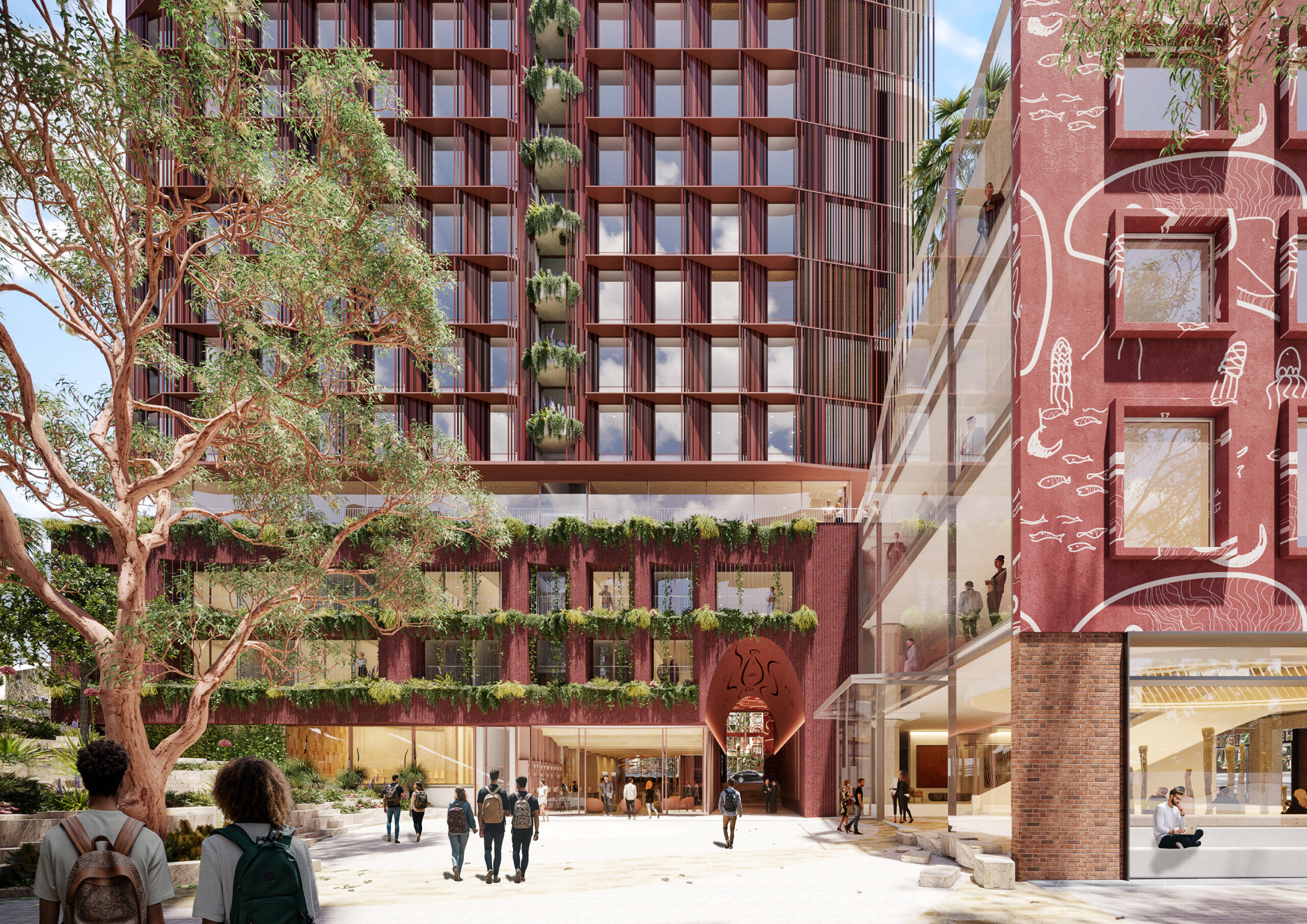
The University of Technology (UTS) Indigenous Residential College embeds First Nations cultural practices into the design of a multi-storey tower in a dense urban setting. An all-First Nations project team led by Indigenous architects, Nguluway DesignInc collaborated with Bates Smart to develop a concept that merges the built environment with notions of Country, drawing on stories and insights of Traditional Knowledge Holders to create a place of belonging for college residents and visitors.
At the base, the existing modernist NCR building is adaptively re-used as a podium featuring a publicly accessible arts centre and a knowledge hub, as well as a generous communal lounge, garden and sunken rooftop for college students. The podium contains a through-site link connecting Harris Street with the adjacent Chau Chak Wing building (designed by Frank Ghery) as well as landscaped courtyards activating the surrounding streetscape. A dramatic internal void features an installation by a First Nations artist, supporting cultural narrative and learning opportunities. Above the podium a 15-storey tower hosts accommodation for 250 students interspersed with social spaces and a rooftop zone. Our team provided integrated architecture, urban design and landscape services for the project.
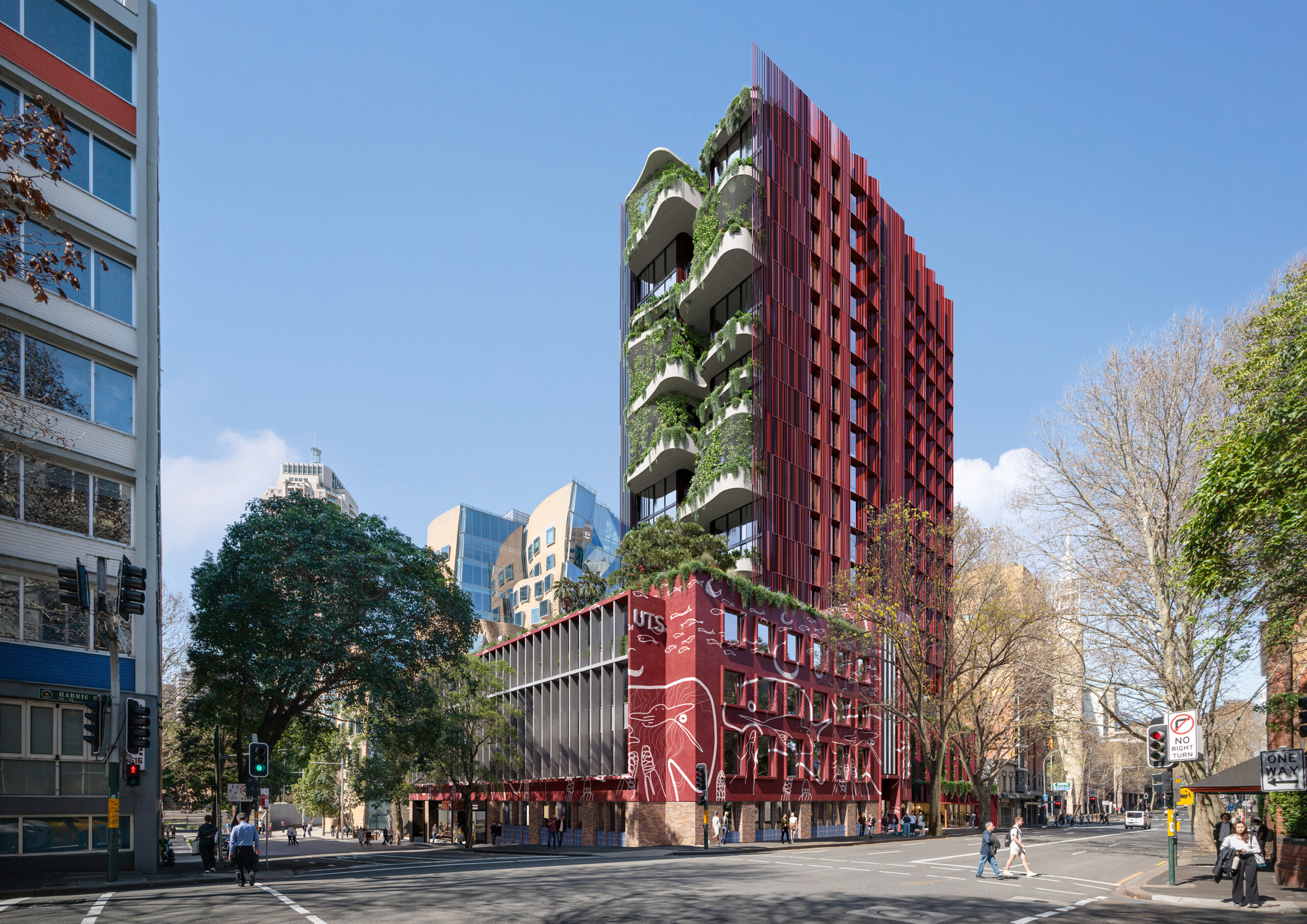
Connecting with Country
At every step, the design is driven by stories of Country. Indigenous socio-spatial planning, visual motifs, colour and material selection and landscaping all resonate with references to Country, place and belonging. Located in the previously swampy Ultimo area, the site sits in the brackish space between saltwater and freshwater Country. Mangrove trees—known as Billy Bung in Dharawal and Gadigal languages—thrive within brackish space, reinvigorating new life and vitality and are a key conceptual and visual motif throughout the design. The architectural vision weaves Indigenous culture, ecological sensitivity, and community into the college, promoting a harmonious experience for all. The spatial thinking embraces the living cultural practice of Gadigal Custodians, drawing in Elder teaching and pastoral care for everyone in the college.
Cultural spaces
A number of distinct spaces facilitate Indigenous cultural practices and create opportunities for Elder sharing. These spaces are dispersed across the building and are of different scales, offering varying degrees of privacy, security, and public access. Functionally, they can support a range of cultural practices including Welcome to Country, Smoking Ceremony, Corroboree, Men’s and Women’s Business, Dreaming and Healing, and pastoral care. Large flexible lounge and garden ‘Billy Bung’ spaces are distributed through the tower, providing a spatial and narrative thread that weaves and connects to Country. These spaces can host around 35 students, fostering smaller-scale social connections. They are north-facing, with balconies and common rooms capturing the sun and views across the city.
It’s crucial to support and empower the local Indigenous people whose Country this site exists on. Respecting the local community enables them to welcome and share knowledge, to ensure culturally safe spaces that reflect Gadigal ways. It is an important cultural practice to always understand whose Country you stand on and to learn to your fullest capacity, ensuring that you follow the lore of the lands we visit.
Patrick Garlett-Forrest
UTS Student of Architecture + Nguluway DesignInc
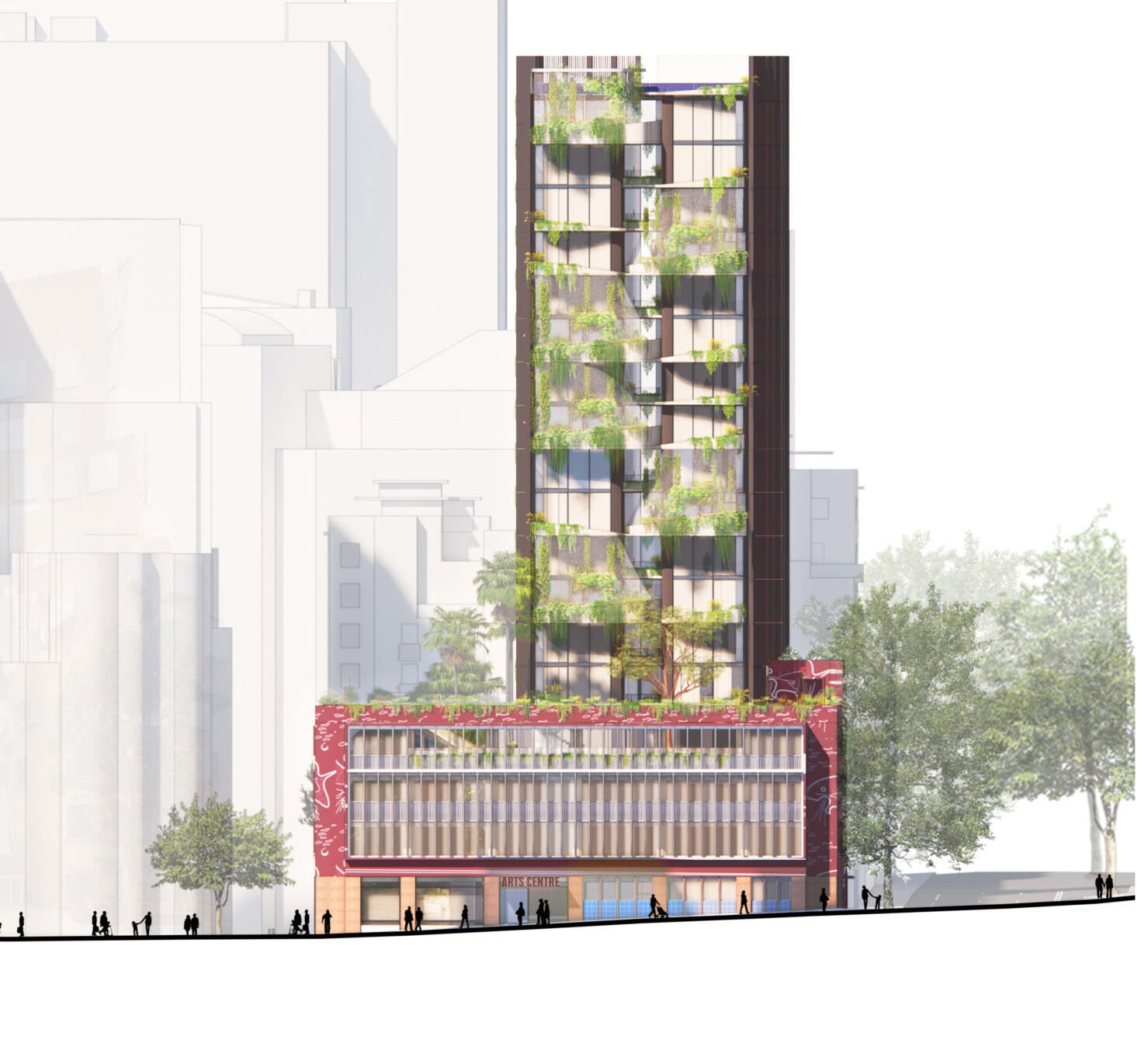
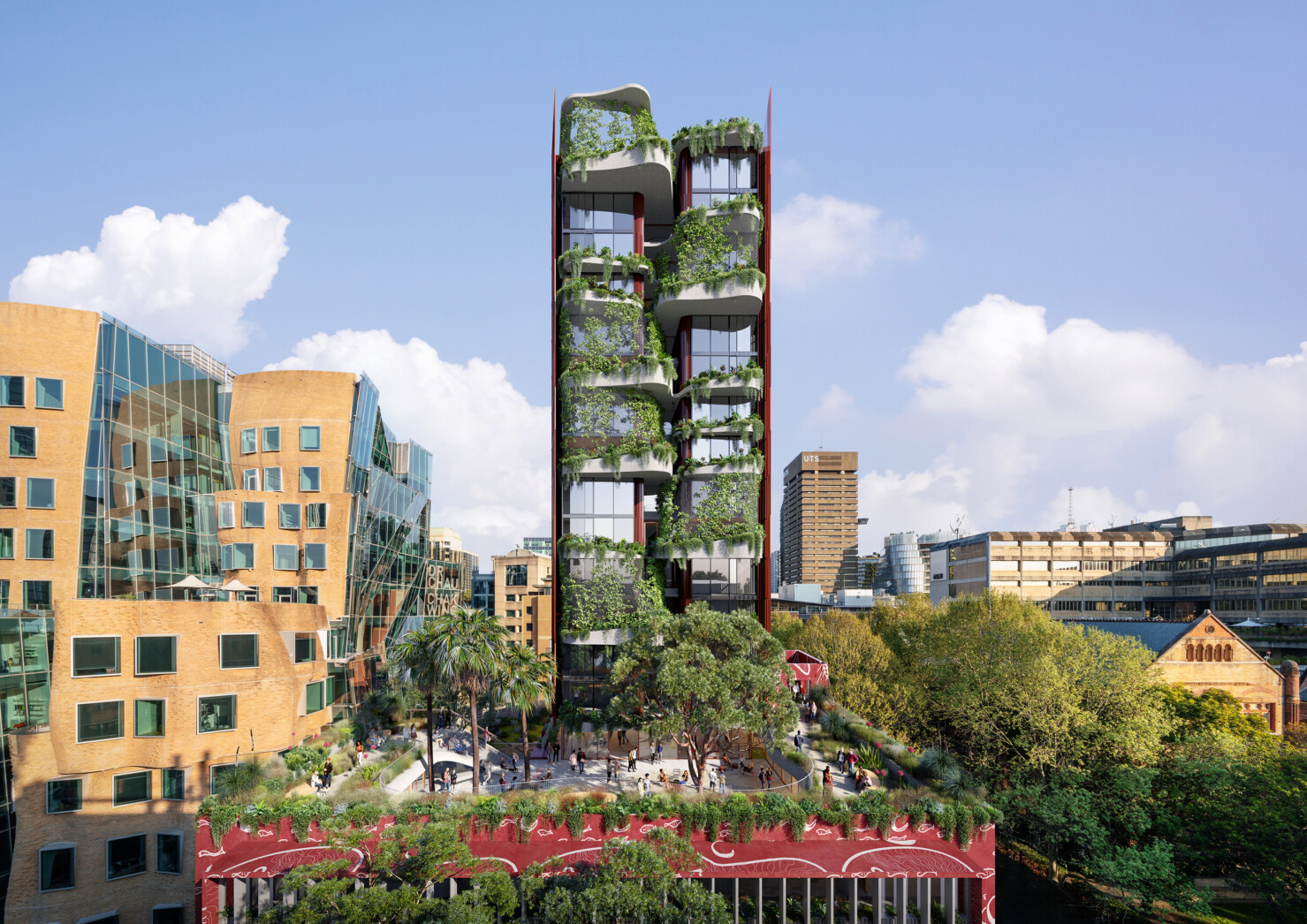
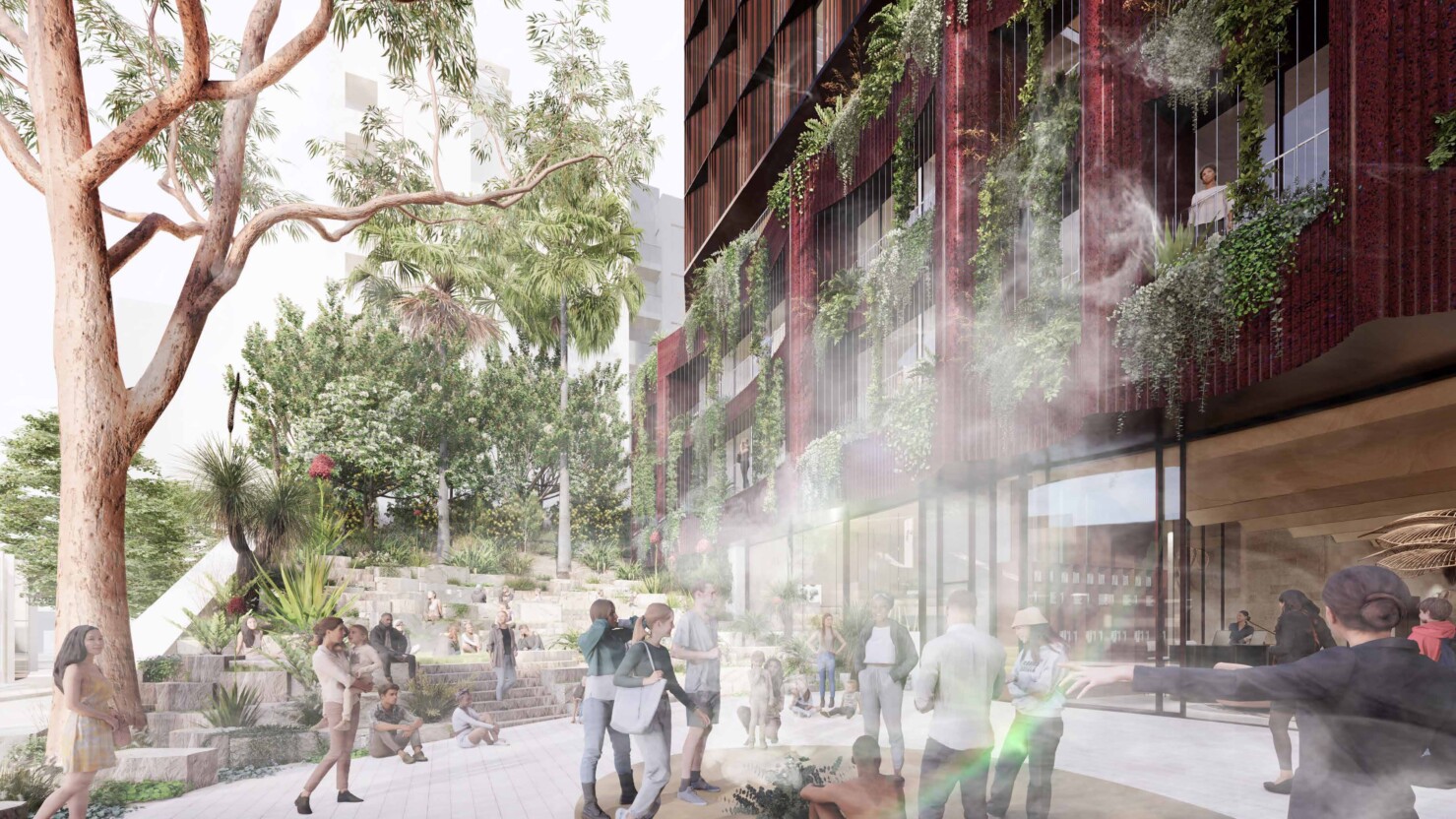
Saltwater Freshwater Belonging—The Ideas of the Billy Bung
Recounted through many generations of Gweagal, Bidjigal and Gadigal women, the ancient Billy Bung story tells of rejuvenation, renewal, and rebirth through a belonging to water Country. This story of Country was told by the Auntys over cups of tea. The songlines we follow operate at different scales. From a national level, right through to the journey between freshwater and saltwater Country. Through to how two people sit together. Between the possum and an Elder, between the creeks and the ocean. Everything is connected through ritualised songlines.
As Traditional Custodians, Gadigal people are part of Country, not separate—responsible for the wellbeing of people and the natural world. The Billy Bung seeds float up creeks, onto the broken, life-less site to offer rejuvenation. Wherever they land new life springs, tying the site back to saltwater Country and restoring broken songlines. Landing first on the Omnibus Lane ground floor landscape, then floating up onto the rooftop garden, then to all of the smaller Billy Bungs spaces. All oriented to the sunny side of the building. Each Billy Bung space bringing us together, reconnecting us to the saltwater songlines. The Billy Bung spaces are culturally safe, imbued with the old stories of Gadigal Country and offer a platform for Elder sharing.
The Billy Bung story can only be told by a Gadigal female such as Aunty Rhonda Dixon Grovenor, or Aunty Barb Simms. Other stories, such as the boomerang story could be told by Uncle Sonny Simms. The waterways are the songlines and the old creek that passes through the site is singing us back to Saltwater belonging. Reinvigorating old ways of Belonging to Country Gadigal way.
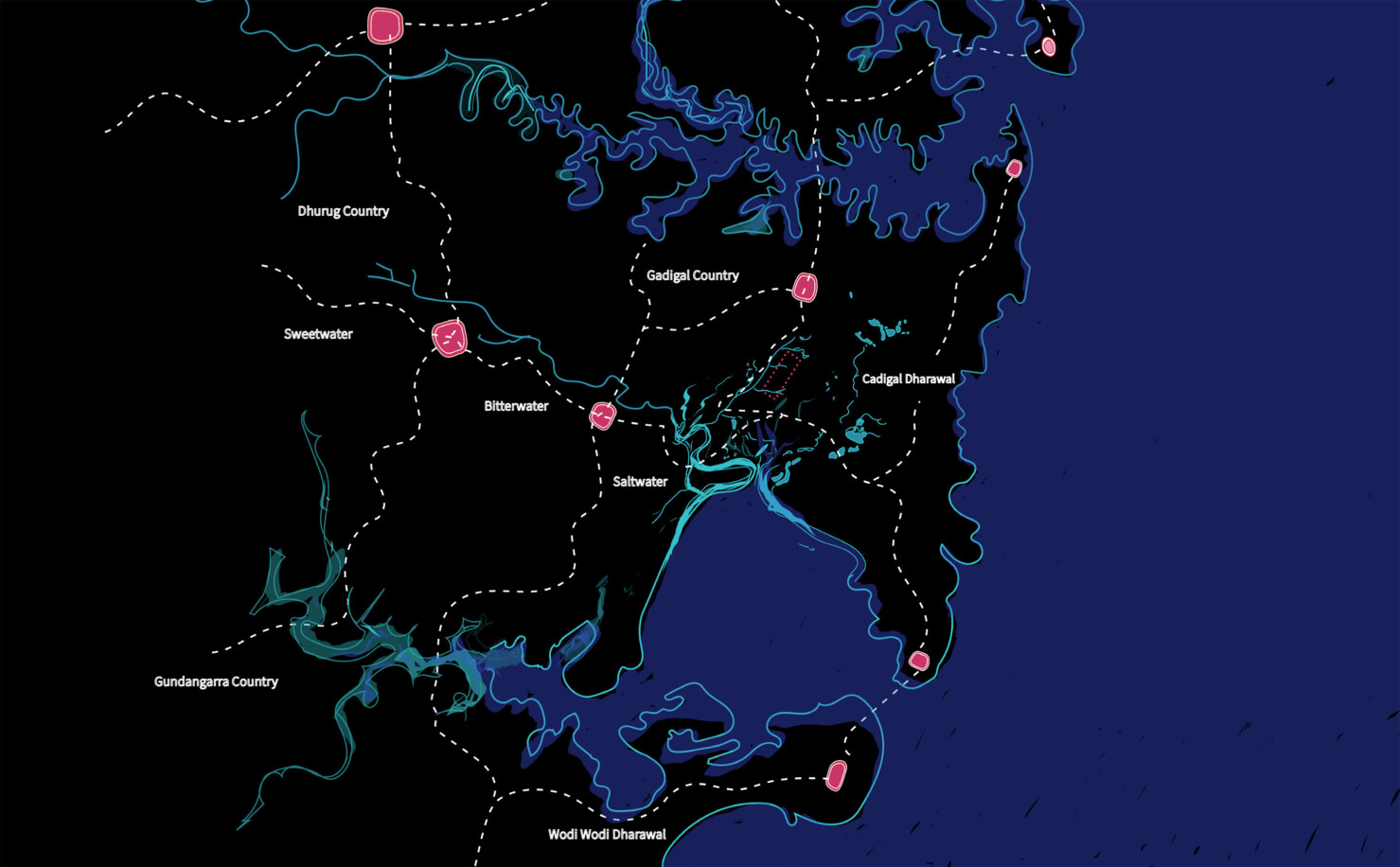
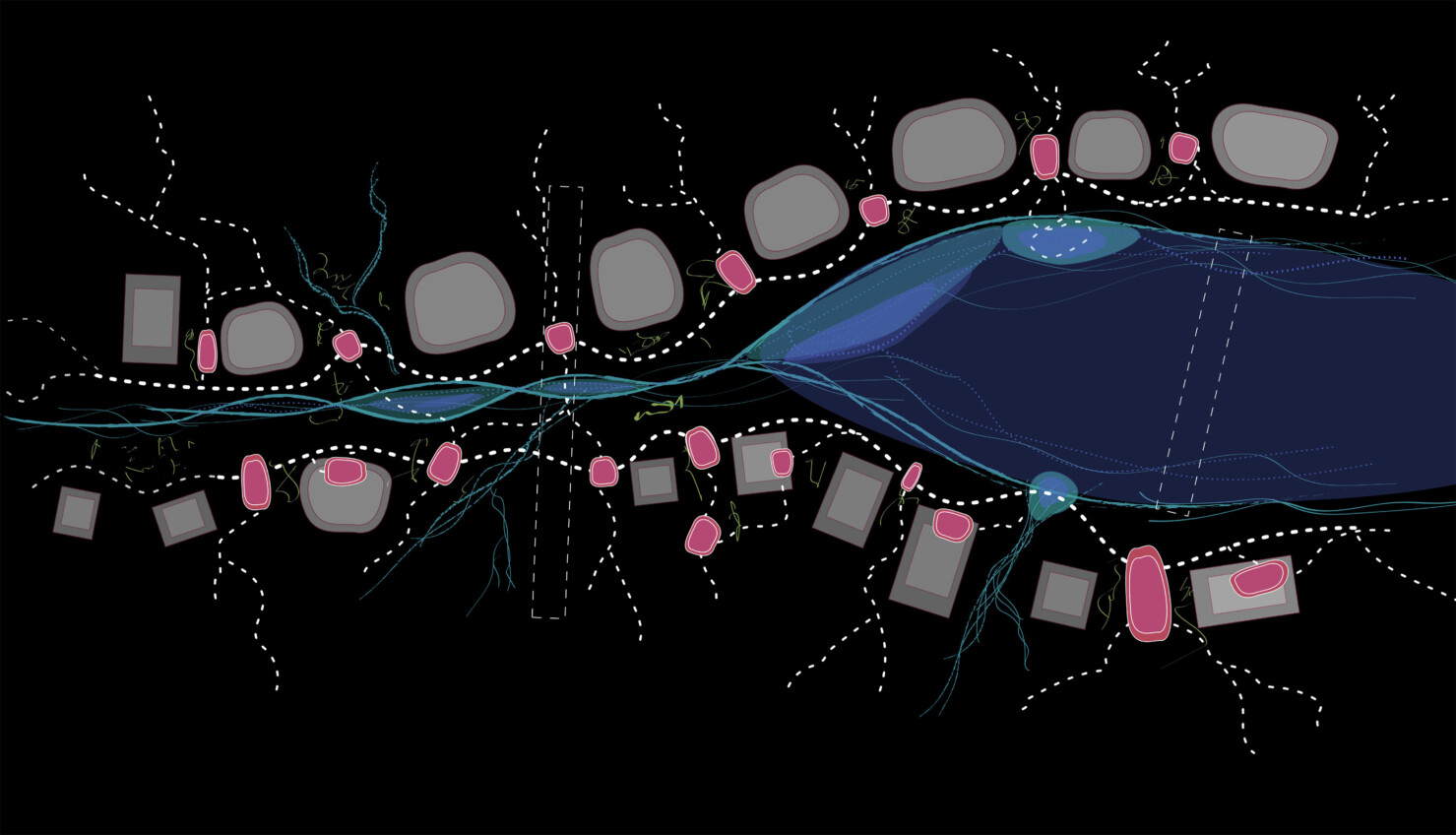
Wherever the Billy Bung seeds land, new life springs—tying the site back to saltwater Country and restoring broken songlines. The Dharug language group all belong to the waterway of Sydney Harbour.

NSW Architect Registration No. 7789